David Skover,
co-author of
The Trials of Lenny Bruce:
The Fall and Rise of an American Icon
_________________________
Lenny Bruce’s words had the power to provoke laughter and debate — as well as shock and outrage. It was the force of his voice that would place him on the wrong side of the law in San Francisco, Los Angeles, Chicago and New York.
Lenny committed his life to telling the truth. But the truth he told infuriated those in power, and authorities in the largest, most progressive cities in the country worked effortlessy to put him in jail. To them, Lenny’s words were filthy and depraved. But to his friends — the hip, the discontented, the fringe — his words were not only sharp and hilarious, they were a light in the dark to the repressed society of the early 1960’s.
David Skover and Ronald Collins’ book, The Trials of Lenny Bruce: The Fall and Rise of an American Icon, is the first carefully documented account of Bruce’s career and free speech struggles. It paints a vivid, shocking, hilarious and tragic portrait.*
Skover talks with Jerry Jazz Musician publisher Joe Maita about Lenny Bruce, a man perhaps best described as “too honest for his time.”
*
I really don’t want to be the great wounded bird, flying and trying to break through those weights so we can bring free expression to everybody. I’m a guy who has to work. – Lenny Bruce
_________________________
JJM What is your background?
DS I am a 1974 graduate of Princeton University. I graduated from Yale Law School in 1978, and clerked for Judge Jon O. Newman, on the Second Circuit Court of Appeals. Shortly after that I began teaching. I am currently Professor of Law at Seattle University, where I teach Constitutional Law and Mass Media Theory, with a particular bent to the intersection of free speech law and the American popular entertainment culture. That explains my interest in Lenny Bruce and his obscenity trials.
JJM What fascinated you enough about the trials of Lenny Bruce that would cause you to devote a significant part of your life to studying them?
DS For a person who is very interested in First Amendment free speech issues, there really is no story more gripping than that of Lenny Bruce and his obscenity trials. Interestingly, Lenny is a little known name in free speech law because none of his cases went to the United States Supreme Court. But his obscenity story changed the First Amendment environment in America in a very practical way. After his death in 1966, the very idea of prosecuting a comedian for off-color language ended. That is really Lenny’s important legacy. He is for me, and for my co-author Ron Collins, a free speech hero.
JJM Jack Kerouac said of Lenny Bruce, “I hate him. He hates everything, and he hates life.” In your experience of extensively studying Lenny Bruce, did you come to the conclusion that he hated life?
DS No, I myself would not say that Lenny Bruce hated life. I understand what Kerouac was referring to when he made that comment. Lenny was billed by Time magazine, after all, as one of the greatest of the “sickniks,” and the spirit of comedy at the time was really coming out of the Bortschbelt era. If you consider the nature of comedy at the time that Lenny was young (he was born in 1925), it was the era of mother-in-law jokes and one-liners. Out of this burlesque material comes Lenny Bruce, who develops his raw and ribald comedy in the strip joints in Los Angeles, where he is emceeing. His material becomes more sophisticated as he goes from that environment into the more mainstream and “chichi” clubs — the Crescendo in LA, the Jazz Workshop and Hungry i in San Francisco, the Gate of Horn in Chicago, the Village Vanguard in New York. In those venues, Lenny refined his humor into the biting, indicting satire for which he became controversial. Much of his language wouldn’t sound shocking by today’s standards, but consider the fact that in his day, Lenny was speaking about things that would have been deemed shocking. He made people feel uncomfortable with his lampooning of the Establishment at every turn. He dared to speak the unspeakable about race, religion, sexual relations, politics; and he revealed the hypocrisies that were latent in power structures. He never held back in the topics that he chose to discuss or in the style by which he expressed himself.
JJM What was the source of his rebellion and his willingness to offend?
DS That’s a difficult question because Lenny was a very complex man. What you are really asking for is some form of armchair psychoanalysis. To venture boldly, I really believe that offensiveness was part of his DNA profile. He could not be anything other than uninhibited, robust and wide open — in that sense, a true First Amendment comedian. Bruce’s colleagues, including Mort Sahl, begged him to change his routine to avoid his legal problems. What Mort didn’t understand, however, is that what set Lenny Bruce apart from him and the rest of the stand-ups is that Lenny couldn’t be a “play-it-safe comedian” and still be Lenny Bruce. He almost single-handedly turned comedy clubs into free speech zones. This happened because Lenny paid the dues, and stood up to the police and prosecutors. In doing so he stood up for the First Amendment.
JJM He was certainly a revolutionary of his era. I first became aware of Bruce in the late seventies, and was amazed by what I was hearing on his records. To this day, I don’t think people come close. As you point out in your book, comedians like Andrew Dice Clay exploit controversy whereas Bruce created it.
DS Lenny was a person who transgressed social taboos time and again. He was an “in-your-face” comedian, and not at all politically correct. On the other hand, he wasn’t a “shock performer” like Howard Stern or Eminem, or “shock jocks” like the New York radio disc jockeys Opie and Anthony. Nevertheless, he did pave the way for them. The big difference between Bruce and the shock performers is that Bruce had substance. What he said mattered.
JJM How did his humor affect his audiences?
DS It depends on what audience you are talking about. There is a portion of his audience that reveled in his humor. A lot of Lenny’s fans were on the fringe. They were the hipsters of their day. The beatniks, the drug addicts, the pimps, the prostitutes, the gays and lesbians — basically the people who were on the outside looking in, and enjoying his assault on the power structure. But, there was another part of his audience, those who were well established but open-minded, who found Bruce to be incredibly inspiring because he held a mirror to America and asked people to look at the warts on their faces. Those who were willing to be authentic and honest about what they perceived the religious, political and legal authorities to be doing were stimulated by Lenny. They were stimulated to think; and sometimes, they were shocked, no question about it. Then, of course, there was a sector of his audience, particularly in some of the more conservative venues — the very Catholic Chicago, for example — who were very much offended when he revealed his feelings about the church or religions in general.
Another example was his take on what happened to Jackie Kennedy at the scene of the assassination of the President. Lenny held up a magazine picture of her scrambling atop the back of the limousine, and said the media was portraying her as a heroine reaching to bring an FBI agent on board. Lenny said, this is “BS,” that Jackie was simply “hauling ass to save her ass.” Then he went on to demonstrate that the very act of converting what she was doing — which was a normal human response to violence — into some sort of heroic act was demeaning to everyone else, really. As he put it, if it were his daughter’s husband that had been shot, she might otherwise feel that she wasn’t like the “good Mrs. Kennedy” who stayed. And people never stay, he argued. So, the feature I think that both excited and disturbed his audience is that Lenny consistently took the political, religious, or social “heroes” of the day off of their pedestals, lowering them to the level of the average person.
JJM I guess you could say you either like that sort of comedy or you don’t. It’s possible his behavioral characteristics beyond just his words made people intolerant of his humor. For example, his urinating on stage in LA
DS Yes, that event occurred in one of the strip clubs, very early on, before his obscenity busts. That happened at the Duffy’s Gayeties, when Lenny came out nude except for his shoes and his bow tie, then stood on stage and urinated in a knot hole. The comedic device was that he engaged in a “labor protest” because the club owner wouldn’t fix the knot hole in which the high-heeled strippers were tripping. This kind of antic explains the environment from which Lenny Bruce’s comedy came. But by the time he was at San Francisco’s Jazz Workshop, or Chicago’s Gate of Horn, the Troubadour in L.A., or the Café Au Go Go in New York, he was not getting busted for conduct like this. He was busted for words alone. The important thing to realize about Lenny Bruce’s obscenity trials is that he was ripping into the hypocrisy of contemporary mores, like a buzz saw, and he was doing it with words alone. He was being prosecuted for word crimes. That is what we have to understand. After his prosecutions, when he died in 1966, the prospect of a comedian’s being busted in a comedy club for words alone changed entirely, and it is 180 degrees different today. Now, the most open and free venue in America for expression is the comedy club. Go to the comedy club, breathe in its air, listen to its fare, and you realize there is no freer free speech zone in the United States. That is Lenny Bruce’s greatest legacy.
JJM Many big names in law were associated with his trials — Thurgood Marshall and Johnnie Cochrane to name two. Why did his arrests attract such prominent personalities?
DS In some cases, it was merely by accident. In the early 1960s, the young Johnnie Cochrane was an Assistant DA in L.A., and one of his very first obscenity prosecutions was that of Lenny Bruce. As Cochrane himself admits in his autobiography, he lost the case and probably is happy for it, for certainly he would now defend someone like Lenny Bruce in such a prosecution. In other cases, the big-name lawyers were hired by Bruce to defend him. One of Bruce’s tendencies was that he always wanted to have a big-name defense attorney. He thought that if he had, as he put it, someone who “swung with the First Amendment,” then he would impress the judge and jury, and get off the hook. Often, that wasn’t the case. He had hired Ephraim London as his New York defense attorney. London was one of the most successful First Amendment litigators in the history of America. Yet, Lenny was convicted in New York. The only counsel who, in fact, won an obscenity jury trial for Lenny was the young ACLU attorney, Albert Bendich. Bendich is now the general counsel of Fantasy Studios, the company that still owns a great number of Bruce’s recordings.
JJM Bruce once wrote to his New York attorney, Ephraim London: “You are an appellantophile, possessed with a shameful and morbid interest in finding statutes unconstitutional on their face.” In general, what was his relationship with his lawyers like?
DS Let me explain first, the quote that you read. London was extremely successful as an appellate attorney. It was in the higher state supreme courts and the U.S. Supreme Court where many of his First Amendment victories lay. Lenny wasn’t interested only in winning at the state or federal supreme court level, after having been convicted at the state trial level. He didn’t want to pay for all of these appeals. The attorneys’ fees were killing him financially. They were bankrupting him. What Lenny could never understand is, if he ultimately could win on First Amendment grounds at the state or federal high court level, why couldn’t he win on First Amendment grounds in a state trial court. This was frustrating and puzzling him. He felt that London was not making the best possible record for him in the trial court. London kept on telling Bruce that he would win on appeal, but that isn’t what Lenny wanted. Lenny wanted to win as soon as possible, and get back to work. That explains the letter that Bruce wrote at the time of firing Ephraim London, which is when Bruce took over his own New York defense case.
In general, Lenny’s relationships to his lawyers were very dicey. Most of his lawyers he fired, and those he didn’t were only able to succeed once Lenny agreed not to interfere with the presentation of the case on defense. Albert Bendich would not accept Lenny’s plea to represent him until Lenny agreed not to interfere at all in the way Bendich would conduct his trial. And, indeed, that is the trial in which Lenny was acquitted by a jury, with the help of very liberal instructions on the law from the sitting judge, Clayton Horne, in the San Francisco Municipal Court. When a lawyer could not secure a non-interference agreement from Lenny, he was hell-bent to interfere at almost every turn with the way the lawyer wanted to pursue things.
JJM It seemed as though Bruce’s biggest frustration was that he could never perform his own act in court
DS Yes, one of his famous routines reflects that frustration. It is called “A Comedy of Errors,” and can be heard on the CD that accompanies the book. Similarly, on the CD, the San Francisco columnist Ralph Gleason, who went on the witness stand in San Francisco in defense of Lenny, explains the phenomenon. The irony was that the prosecution got to put on Lenny’s routines, but only in the truncated and disastrously non-comedic way that the police officers would present the bits. The police officers’ notes generally would consist of nothing more than a string of dirty words. The officers would get on the stand and say: “Then he said ‘shit’ and ‘tits’ and ‘ass’ and ‘shit’ and ‘fuck,’ and that was about it.” That was the presentation of Lenny’s routines as the prosecution viewed them. Lenny claimed that, then, he had to get on the stand and defend that routine, not the routine as he had delivered it. Lenny was dying to put on his own comedy acts in the courtrooms. It is rich that he was striving to do his comedy bits in court during the day, and that at night he was bringing his courtroom proceedings into the comedy club as he read transcripts and riffed on the trial events.
[/infobox]
JJM Talk a little bit about what happened when Lenny Bruce performed in court for Thurgood Marshall
DS By the end of 1964, Lenny was representing himself, in large part because he was financially strapped. He appealed a civil rights case that he had brought against his New York judges and prosecutor to the Second Circuit Court of Appeals, the federal appellate court in New York. One of the appellate judges there was Thurgood Marshall, before he served as a Justice of the United States Supreme Court. Hoping to score a sympathetic point with Marshall, Lenny said that he was being treated like a black man in Alabama. Except, he used the notorious “N” word to make his point. Well, Marshall’s jaw dropped, and Lenny lost on appeal.
JJM In what areas were the prosecutors justified for prosecuting Lenny Bruce for obscenity?
DS I think that at no point, in any of the trials, was a prosecutor justified in prosecuting Lenny for obscenity. If one looks at the governing Supreme Court law on obscenity at the time, it is very hard to find objectively that Lenny Bruce’s routines were bereft of all social or political value. The obscenity law doctrine, coming from a Supreme Court decision called Roth v. U.S., had as one of the necessary elements of obscenity that, taken as a whole, Bruce’s routines had no social redeeming value. Whatever one thinks about what Lenny was doing, it is virtually impossible to say that his critique of the government, or of religion, or of liberals who hypocritically were not comfortable with African Americans — or even his riffs on the modern state of sexual relations — had no redeeming social value. What ended up happening, essentially, is that Lenny was being busted for blasphemy or for what we would call seditious libel. In Chicago, for example, the smoking gun was quite evident. The day after Lenny was busted for having given, among other things, his famous “Christ and Moses” routine, which is a scathing critique on the Catholic Church, the chief of police returned to the Gate of Horn club and spoke to the club owner. The officer told him in no uncertain terms that if he ever allowed Lenny Bruce or any other comedian to “mock the pope” once again, he would pinch everybody in the club and shut the club down. In fact, the Gate of Horn never really survived the Lenny Bruce obscenity affair.
JJM How did prosecutors feel about prosecuting Bruce?
DS Some of them felt entirely justified prosecuting him. Certainly that was the sentiment of his most avid prosecutor, Richard Kuh in New York. Some prosecutors had much more trouble with what they were doing with Bruce. In fact, some of Kuh’s colleagues refused to participate in Bruce’s prosecution for just that reason. So, it isn’t as though police officials or prosecutors uniformly found Lenny to be offensive enough to arrest and prosecute. But in the long run, it is the function of the prosecutor’s office to determine whether, in the balance, the First Amendment provides an effective defense for pursuing the obscenity charge. These prosecutions were undertaken, on the whole, with very little sensitivity to First Amendment values. That is a large part of the problem in the Lenny Bruce story.
JJM Vincent Cuccia, one of the New York DA’s who helped try Bruce, said “I feel terrible about Bruce. We drove him into poverty and he gradually fell apart. It’s the only thing I did in Hogan’s office that I really feel ashamed of. We all knew what we were doing. We used the law to kill him.” Who or what killed Lenny Bruce?
DS That has been a question bandied about by many with very different responses. In fact, in our chapter on Bruce’s death, we ask that question and give a series of different answers to it. As I recall, the record producer Phil Spector said that Lenny died by an overdose of police. Surely, we can’t forget that Lenny was shooting up on the day of his death. There is a great deal of speculation as to whether he intentionally overdosed by taking an excessive amount of morphine at the time he was de-escalating or “coming off” of the drug. Apparently, Lenny was trying to “go clean” at that period of his life. So, one might wonder whether a load as large as what he took would obviously have produced death, and that Lenny knew that. Whatever one’s viewpoint on what killed Bruce, there is no question that all of his obscenity trials had a tremendous impact on Lenny’s health, both physical and psychological, and on the state of his career and his finances. He was very depressed about the fact that he had not been successful in proving himself as being worthy of First Amendment protection. That really disconcerted him. In addition, he was legally bankrupt. On the day that he died, he had received a foreclosure notice on his home from the bank, and he was about to lose his fortress in the Hollywood hills, where he had sequestered himself, almost like a recluse, towards the end of his life. It may be a combination of all of these factors and others that explains what killed Bruce. But, in the long run, it is undeniable that the obscenity trials were one of the main factors.
JJM How is the law story of Lenny Bruce from forty years ago still relevant today?
DS There is no doubt that Lenny’s obscenity trial stories have currency in several ways. First, Lenny’s courtroom dramas opened the doors for comedians like George Carlin, Dick Gregory, Richard Pryor, Joan Rivers, Robin Williams, Bill Maher, and Margaret Cho. Thanks to Lenny, performers are free to speak their minds openly and without inhibition, and not face arrests and prosecutions for what they say. That said, Lenny’s battles to liberate words are really not over. We still have FCC-regulated radio and television broadcasts, in which I must censor Bruce myself when interviewed. Moreover, consider what happened to Bill Maher when, echoing in a sense a famous Lenny Bruce routine, the Adolph Eichmann bit heard on the CD, he criticized President Bush and the war against the Taliban. Maher suggested that the Taliban were not cowards, and seemed to imply that we might not be much better than our enemies in bombing them. For that, Maher was “Bruced” — in the sense that he was silenced for his controversial and offensive words. It is true that Maher could not raise a First Amendment claim like Lenny, because police authorities did not come onto the studio set and drag him off in handcuffs. Maher experienced a form of commercial censorship, more akin to that of the many club owners who would no longer hire Bruce for fear of losing their licenses. But, despite the important difference in the character of governmental and commercial censorship, it is clear that Maher was silenced for his searing political commentary. So, the idea that we are free to speak our minds in critique of political or religious or social figures today, and that we are not going to face penalty or punishment for that, has not really been vindicated. In that sense, Lenny Bruce’s struggles to liberate words from fear and repression still go on today.
______________________
The Trials of Lenny Bruce:
The Fall and Rise of an American Icon
by Ronald Collins and David Skover
*
About David Skover
JJM One last question, David. Who was your childhood hero?
DS. I am really not sure that I had a childhood hero as such. I recall that, at a very young age (around six years old), I was asked by one of my parents’ adult friends whom or what I wanted to be when I grew up, and that I replied: “A judge.” As I remember the scenario, my questioner responded with some great surprise: “Not Superman? Not a fireman?” “No,” I reiterated, “a judge.” “And, why would you want to become a judge?” “Because,” I said, “judges are wise, and I want to be wise.” Who knows how I had obtained that idea? But I held onto it for a very long time. It never occurred to me until much later that I might be exercising my jurisprudential creativity as a constitutional law scholar and author on America’s free speech culture. Still, surely my current roles take no less wisdom — and no less intelligence and compassion, as well — than the judicial image that inspired my earliest aspirations.
________________________________
The Trials of Lenny Bruce Web Site
Lenny Bruce products at Amazon.com
David Skover products at Amazon.com
_______________________________
Interview took place on October 4, 2002
*
If you enjoyed this interview, you may want to read our interview with comedian Tom Smothers.
*
Other Jerry Jazz Musician interviews
* From the publisher







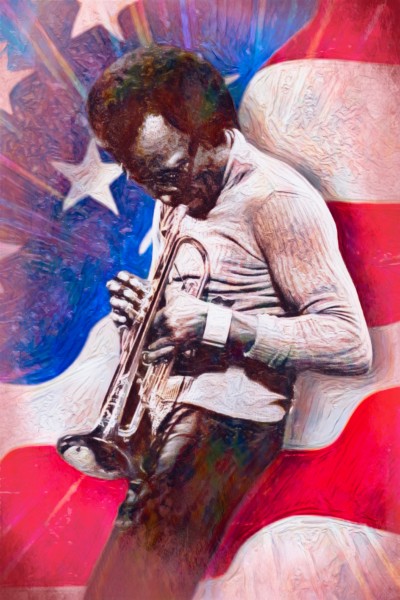
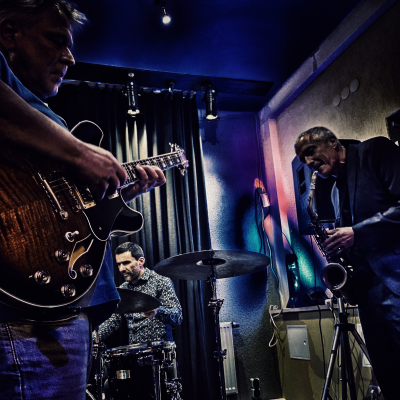
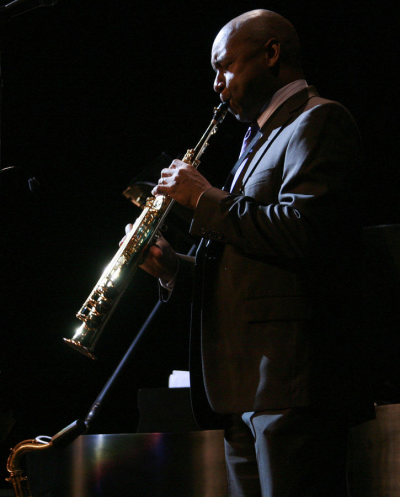

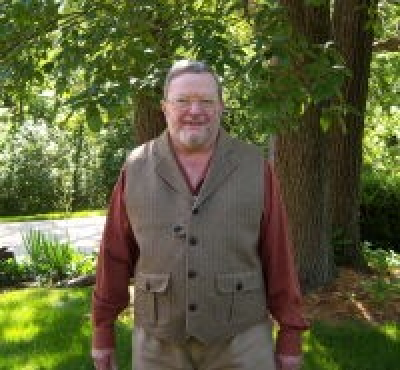


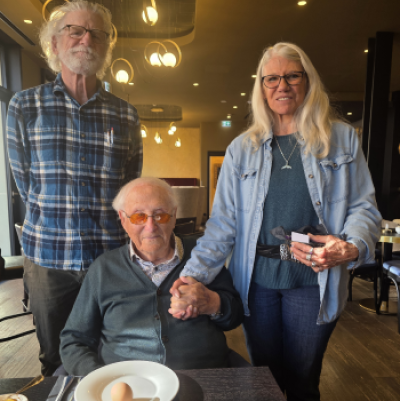

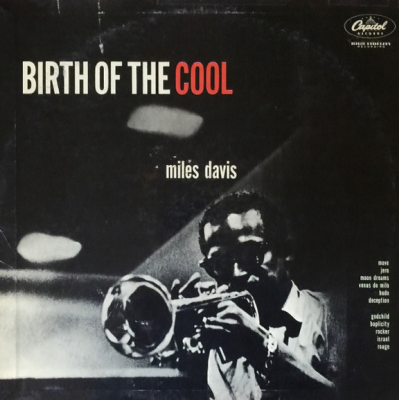




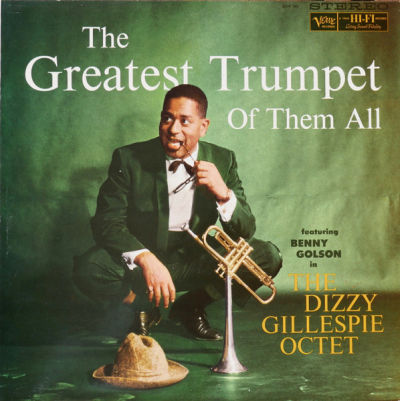
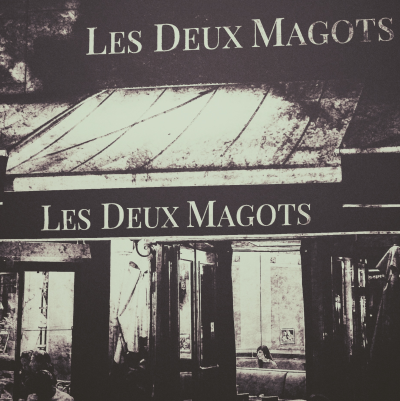

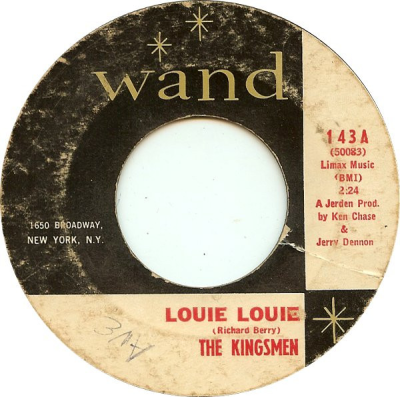



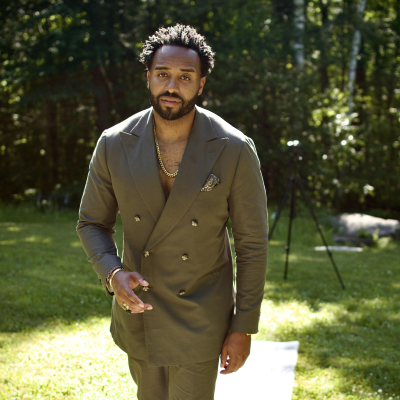











Man, this is great stuff. And, of course, Lenny was tied into the jazz scene. Friends with Joe Maini and Jack Sheldon, etc. And Mr. Skover is correct about Lenny setting the table for Carlin, Pryor et al. Thanks for this JJM.
Hi David! I have had in my possession some early photographs of Lenny Bruce for several years now and just now trying to tackle the idea of sharing these with the public. I believe he is actually right out of the military at a function of some sort and he is actually wearing a dress! An officer actually took these pictures and it definitely looks to be 1945 era. One picture even shows Lenny holding an envelope which just may be his discharge papers. Other officers are there and what looks like a few TV stars. I really don’t know where to go with these pictures… Any help? Pictures were taken by AL Kermisch who was a big baseball historical writer from the Baltimore & Washington, D.C. area. I did sell off other historical baseball items in the past. Any comments would truly be appreciated.
Thank-you… Jeff
Hi David! I have had in my possession some early photographs of Lenny Bruce for several years now and just now trying to tackle the idea of sharing these with the public. I believe he is actually right out of the military at a function of some sort and he is actually wearing a dress! An officer actually took these pictures and it definitely looks to be 1945 era. One picture even shows Lenny holding an envelope which just may be his discharge papers. Other officers are there and what looks like a few TV stars. I really don’t know where to go with these pictures… Any help? Pictures were taken by AL Kermisch who was a big baseball historical writer from the Baltimore & Washington, D.C. area. I did sell off other historical baseball items in the past. Any comments would truly be appreciated.
Thank-you… Jeff